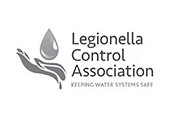In July 1976, the first recorded outbreak of Legionnaires' disease was identified following a significant outbreak of pneumonia among people who attended an American legion convention in Philadelphia.
Of the 183 cases of pneumonia 29 people died.
The first recorded outbreak in the United Kingdom was in 1985 at Stafford District General Hospital, which caused 27 deaths.
200-300 cases are reported annually in England and Wales with a 10-14% mortality rate. August 2006 saw a doubling of reported cases to the health protection agency compared to August 2005.
Legionnaires' disease is a potentially fatal pneumonia, caused by Legionella bacteria.
Breathing in small droplets of water, contaminated by the bacteria, causes infection.
Everyone is potentially susceptible to infection, but some people are at a higher risk, e.g. those over 45 years of age, smokers and heavy drinkers, those suffering from chronic respiratory or kidney disease and people whose immune system is impaired.
Legionella bacteria are common in natural watercourses such as rivers and ponds.
Because it is widespread, Cooling towers and hot and cold water systems may be contaminated.
The bacteria survive low temperatures and thrive at temperatures between 20°C and 45°C if the conditions are right, e.g. if a supply of nutrients is present such as rust, sludge, scale algae and other bacteria.
They are killed at high temperatures.





